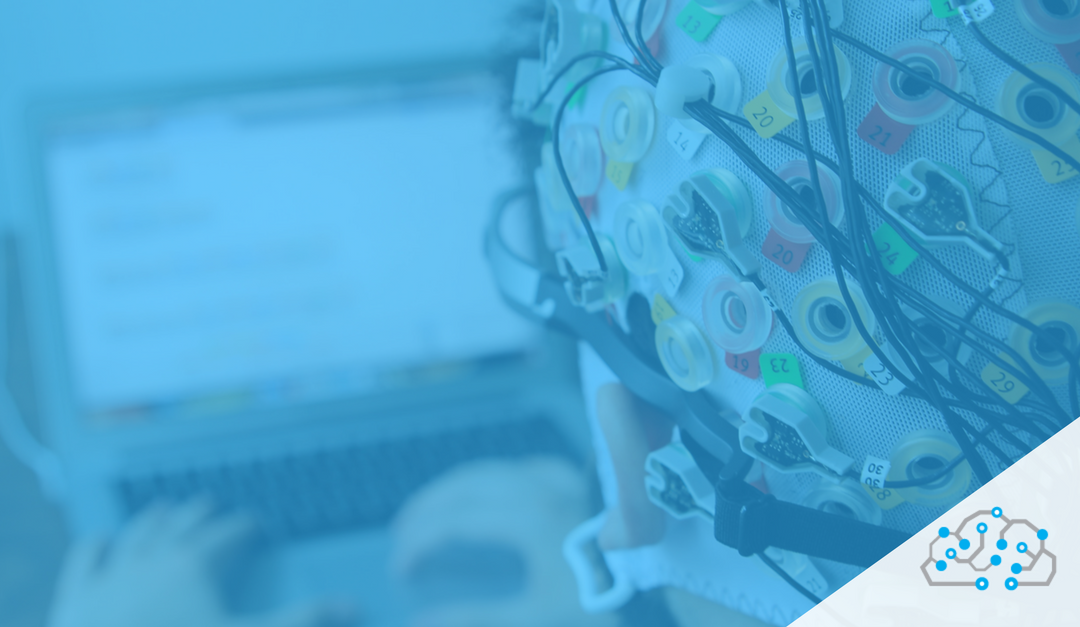Biomarketing is the application of advanced biometric tools to evaluate small changes in customers’ bodies to critically understand and improve products and marketing communications. It’s a brand new approach to understanding your customers on the deepest level. However, like most revolutionary products, the concept of Biomarketing often seems confusing and unintuitive. The biggest questions we usually get from our clients revolve around the technology we use, and what insights each of them provides us. To help clarify things a bit, this week we’re going to briefly explore some of the tools we use, how they work and what insights we derive from using each.
Eye Tracking — What You’re Paying Attention To
Before we can start to look at what people think and feel about your product or communication, we have to first figure out very specifically what they’re paying attention to at any particular moment. To do this we make use of Eye Tracking technology. Eye tracking involves training a sensitive array of cameras on the research participant’s face. These cameras, driven by powerful machine vision software, are able to identify the pupils of the participants’ eyes and where they’re looking.
By overlaying this information with a display we can generate accurate paths that show where the subject was looking each second. When we do this with video ads we’re able to see exactly what catches their attention in each scene (hopefully your product or logo). With websites and interfaces we can even aggregate the data from multiple participants to generate heat maps.
Sometimes, though, we’re looking at a scenario that doesn’t involve a display. So instead we make use of glasses that have cameras focused on the subject’s eyes as well as a heads-up camera. We can then overlay the tracking information over the video of what the participant was seeing. This is extremely useful for retail walkthroughs where you want to see what grabs attention in a real store.
As useful as eye tracking is by itself, though, it’s far more useful when overlaid with data from other tools. That way we don’t just see what grabs attention but whether it’s positive or negative.
EEG — What You Think
EEG is the most advanced tool that we have in our arsenal to understand your customer. EEG or electroencephalogram is a tool commonly used in the medical industry along with fMRI to identify what parts of the brain are being actively used at each moment. fMRI is a very popular alternative to EEG and works by measuring blood flow in the brain. Unfortunately, fMRI often comes with a delay making it difficult to strongly correlate brain activity and what’s causing the reaction.
EEG, on the other hand, measures the electrical impulses in our brains. Yes, just like we sometimes see in movies and cartoon animations, there are actual electrical pulses firing in your head. Including right at this very moment while you read this. It’s pretty amazing. EEG measures these incredibly small impulses and then amplifies them for us to analyze.
Using a series of electrodes placed across a participant’s head with a cap, we’re able to locate where in the brain there is activity. We take this information and start to analyze it according to a variety of well-known and well-documented methods used to understand what happens in the brain. So right now we would probably see your Brocha’s area light up since you’re reading, and we’d also measure a ton of gamma brain waves because we know you’re paying so much attention.
Research participants needn’t worry though since we haven’t quite figured out a way to “read your mind.” Instead we can make critical assumptions such as whether you think something is good, bad or neutral. We can also see if you’re working really hard to understand, or if whatever you’re seeing or doing is simple and intuitive.
Using this information both at an individual level and in aggregate, we can help engineers, marketing communications, designers and even HR professionals better understand their targeted demographic.
Facial Expression Analysis — What You Feel
As wonderful as EEG is, as we mentioned before, it requires making some generalized assumptions. It’s not so accurate that we can rely on it completely to read the participants’ emotions. Most of the brain remains a mystery. Thankfully, even the world’s greatest poker players can’t hide those emotions because we don’t, in fact, wear our hearts on our sleeves but rather on our faces.
Using a simple camera powered by facial landmark detection and tracking software, we can identify the smallest changes in a participant’s face to figure out what they’re feeling at any moment.
A small furrowing of the brow undetectable to the most trained specialist can be identified by a computer and recorded in our data read outs. The result is that even if a participant wants to look smart and tell you something is easy, we can tell you otherwise 😁
Galvanic Skin Response — How Much You Feel
Finally, the last piece of tech we like to use is Galvanic Skin Response. Have you ever wanted to ask someone out on a date or gone into an interview, and realized that your palms were a little sweaty? Well, it’s a completely natural reaction to heightened emotion. But even when your emotions fluctuate just slightly, the amount you sweat changes.
Using a small sensor that we place on a participants finger, we can see these minute changes in the amount a participant is sweating and derive insight about how much they’re feeling a particular way. Effectively, we bring a whole new meaning to feeling a little hot under the collar.
Of course, these techniques are useful individually. However, the true magic comes when they’re used together. They let us have a participant go through a user interface and identify that they feel frustrated with on the second screen by a certain amount and it’s because their eyes are darting around as they can’t seem to find what they’re looking for. And that’s just one example out of hundreds of applications. It’s remarkable the insight you gain into users and customers as you start to understand what they think and feel, how much they think and feel it, and what exactly they feel that way about. And, now, it’s all possible thanks to Biomarketing.
Bridging the Gap Between Data and Reality
Let us know you'd like to receive your free consultation!
*We always keep names and email private

